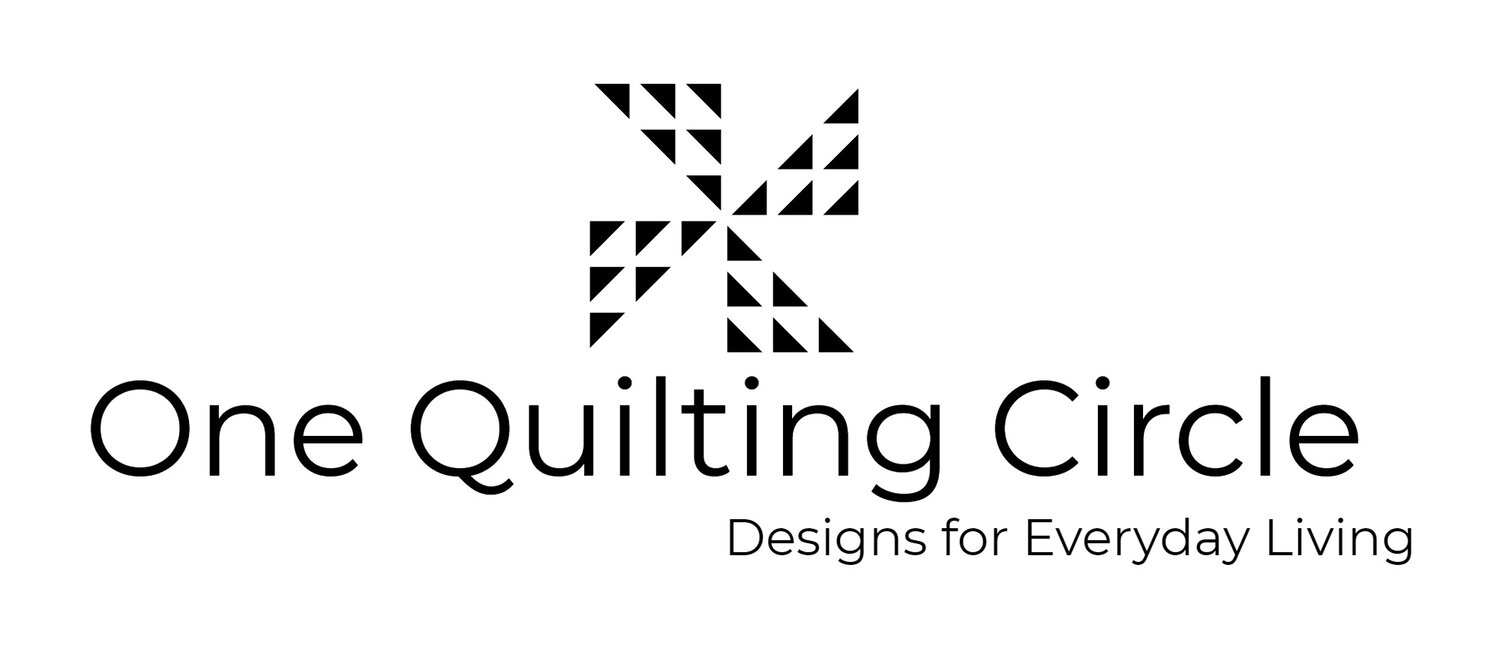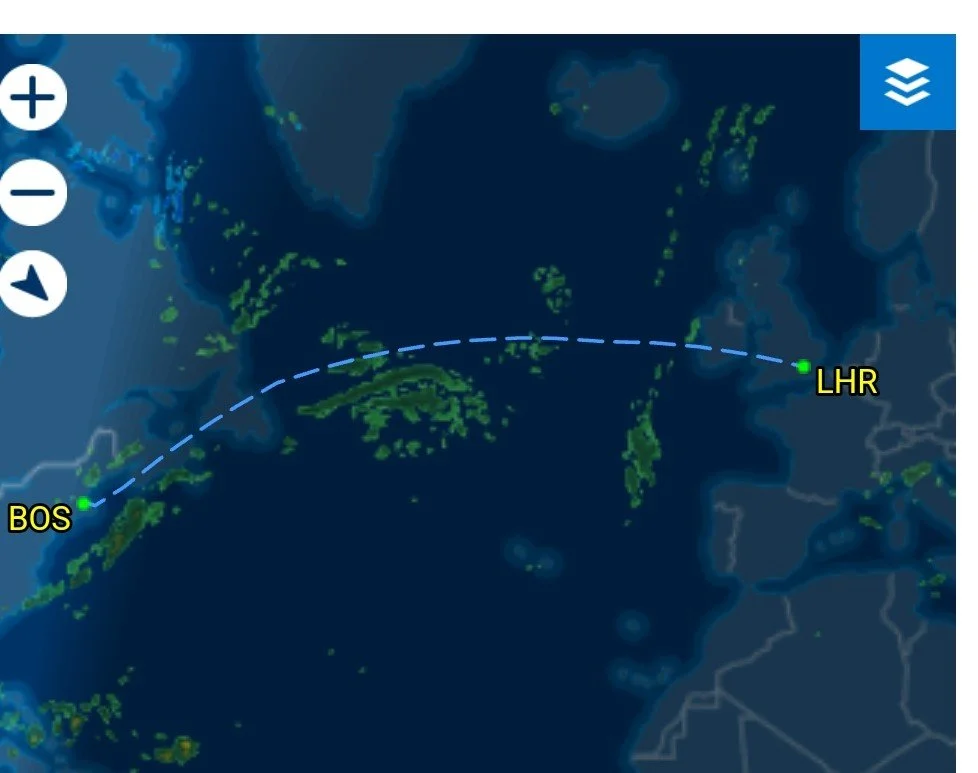Fire and Ice Cruise - Part 2 - Planning
I had a Book of Lists - my backup in case something happened to my phone.
Here’s the second installment in this series about what it’s like to take a quilting cruise. You can read part 1 – the Background by clicking here. Today’s blogpost will highlight some of the planning that went into this trip. The next installment will talk about how I packed for a 2 week vacation (plus a 5 day quilting class) in one suitcase.
When my husband and I travel together, he takes scare of a lot of the research and planning that is part of any cruise. This trip was significantly longer that the trips we usually plan together – and it included multiple countries, a very wide temperature range, and a 5 day quilting masterclass. That meant that everything about the trip was on me, and I really leaned into the planning process.
Most experienced cruisers will tell you to arrive in the cruiseport the day before you sail. Air travel can be difficult to predict, and the ship will depart when it’s scheduled, so adding extra time on the front end gives you a cushion. Since we were departing from England, that meant that I also had to account for a 5 hour time difference. Our sailing was Thursday afternoon from Southampton in England, , and I flew overnight on Monday afternoon, arriving in London on Tuesday morning.
Although the Cruise itself didn’t include time in London as part of it, they did offer it as an add on. I elected not to do that because I had been to London once before, and I really wanted to expand on what I had experienced at that time. My needs were simple - a clean hotel, with an elevator and with air conditioning. It was fairly easy to me to find a hotel to stay in that met that criteria, but that also meant that I had to do a lot of research on London itself beyond the cruise part…that’s probably how I missed the part about the Euro in Ireland. If this trip has been to a country where I didn’t speak the language (well, almost speak it!), I would have gone with the group from the point of arrival.
My story and I’m sticking to it.
BOSTON departure to Heathrow (LHR) arrival on the plane's seatback screen.
As soon as I decided that yes, I was going (and Mike decided that he was not), I was confronted with my first obstacle. I needed to find a roommate quickly in order to proceed with the trip. Fortunately, I knew where to look - on Facebook. Karen has a private group there where you can meet people online, get to know one another, ask questions about travel excursions - pretty much anything you needed to ask - including looking for roommates.
As a matter of fact, this is something each cruiser is responsible for as an individual. Fortunately, I was lucky (very lucky, indeed) in that I found a roommate named Kay almost immediately, and the first thing we did was to set up a private zoom call between the two of us to see if we were compatible. As it turns out, she had been on the Panama cruise last year with Karen, and she felt very comfortable with this group of organizers. I think that today both of us will tell you how much we enjoyed each other’s company on the trip.
Mike was a bit surprised that I found a roommate as quickly as I did, but as I pointed out - I knew right where to look.
Once I had connected with Kay, I then went about making lists of things I needed to find out about/order/do. I had an old notebook here in the workroom that I converted into my trip notebook, and it was quickly filled with notes, itineraries, things to check out…it became my security blanket. Yes, I am old school - but in this case, I had a purpose.
I have become as dependent on my phone as the next person, but in preparing for this trip, it became clear that I needed a backup plan for my phone. Apparently, in downtown London it’s not unusual for phones to be stolen from tourists, and the fact that I kept finding this noted in my research led me to keep the Notebook.
If my phone was stolen or lost - then everything I needed was still available in hardcopy in my suitcase. And it makes a heck of a souvenir.
Do you know your passport's expiration date? You should!
Here are a few things I learned along the way…
If you are traveling internationally with a US passport, it needs to be valid for at least 6 months after you return home. I had no idea that that was a thing, but I was very relieved that my 10 years is up in 2027. My roommate on the cruise had to get hers renewed pronto to meet that requirement.
Many people will tell you that most large European cities are cashless, and you don’t need to carry a lot of cash. On this trip, I landed in Ireland at one of the ports, and found out by checking the shop windows that the currency in Ireland is the Euro. I was grateful that my card had not had any foreign transaction fees, but I literally had no idea what the conversion for that currency was. For someone who usually has a general idea of the price of things, I found that very disorienting, and I passed on a lot of shopping because of that.
I researched which of the credit cards in my wallet carried hefty foreign transaction fees, and which had none. In London, when you’re using the tube, you need to tap “in” and “out” of your fare – so that’s 2 transactions. The costs themselves arenen’t bad -but the fees can usually be an unpleasant surprise. And always use the same card so their system can track your in and your out. I had two with me, a primary and a backup in case something went sideways. If there are no fees, when the transactions are processed at the end of the day, they will go through at the lowest conversion rates available.
Cell phones and international travel can almost be a pay per view seminar all on its’ own. Plans, international sim cards, roaming charges, airplane modes, battery life. I spent more time on this piece of the planning than almost anything else. My cell phone plan has international service included, so I didn’t need to deal with an ‘e-sim’, and I was able to use the plan to text Mike while I was gone. You just need to account for time differences.
When you are traveling in another country, you need to know that type of electrical converter you need in order to do things like charge your phone.
I learned a lot during the research of this portion of the trip.
Here are a few things that I learned once I was already on the trip.
Some of them would have been nice to know before I set off…
I should have researched what the ocean conditions were once we left Cork and before arriving in Reykjavik, Iceland. The North Atlantic is apparently well known for being ‘choppy’, and I learned as I went. I’m fortunate in that I am not prone to being sea sick, but it was an interesting two days. On a quilting cruise, I would not recommend trying to square quilting blocks in those conditions.
This was a big surprise to me - when I arrived in Southampton to board the ship, I was asked to surrender my American passport to the cruise line - I had never heard of that before. Well, ‘ask’ may not be the right word, because it wasn’t an option. It turns out (and here’s where communication would have helped a lot), it’s because we were stopping at a port in the European Union (Ireland), and everyone’s passport was being stamped all at once. I didn’t need it on my person to leave the ship in port, and it was returned to me on the 3rd day of the trip. For all of the travels - 4 countries - that’s the only stamp in it.
Next installment - how does one pack for a quilting cruise?



